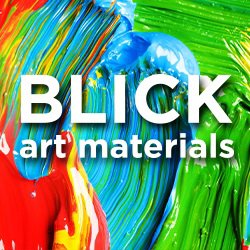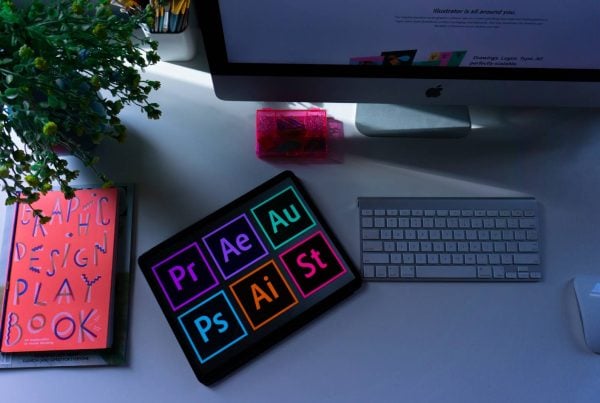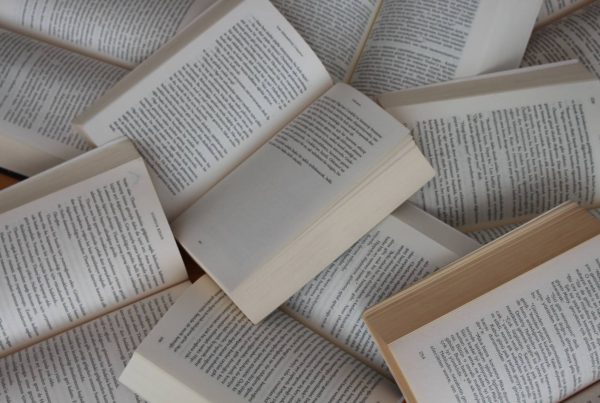My journey through the vibrant world of art and creativity took a significant turn when I enrolled at Norwich University of the Arts (NUA), a cornerstone of artistic learning in the UK. Between 2012 and 2015, I embarked on a Bachelor of Arts in Fine Art, specialising in printmaking, an experience that, in retrospect, was as enriching as it was eye-opening.
Arriving fresh-faced from a small town in Essex, I thought I knew it all, only to find out that my time at Norwich University of the Arts (NUA) was about to challenge and expand my perspectives in ways I had never imagined.
Table of Contents
Is Norwich University of the Arts Good?
Yes, Norwich University of the Arts is an excellent choice for studying fine art printmaking. Over my three years there, I found the course to be well-structured and supported by fantastic facilities and great staff, all of which contributed significantly to my positive learning experience.
Studios, Equipment and Staff
NUA, known for its dedication to fostering creative talents, offered an environment that was both inspiring and demanding. The printmaking studio, in particular, was a revelation. It was, without exaggeration, the best studio I’ve ever had the privilege to work in. The array of equipment available was nothing short of impressive, catering to every conceivable printmaking need. From three large-format screen printing tables to a collection of large etching presses, the resources at hand were unparalleled. An Albion press for relief printing and a couple of nipping presses added to the variety, supporting a range of specialised techniques including intaglio printing, mezzotint, and aquatint. The facility was a printmaker’s dream, designed to unleash creative potential and explore the depths of printmaking art.
Reflecting on my time at Norwich University of the Arts, it’s crucial to highlight the instrumental role played by the specialist tutors in the printmaking department. Ernst and Sonja, with their vast knowledge and passion for printmaking, were pillars of support and learning during my time at NUA. Their dedication to teaching and their unwavering commitment to fostering a deep understanding of printmaking techniques greatly enhanced my educational journey.
Academic Life and Laid-Back Days
As a student, I must confess to having been on the more laid-back side, an approach that, in hindsight, might not have fully leveraged the opportunities NUA provided. The social and academic life at NUA was vibrant and inviting. There was an invigorating mix of learning and leisure, where each day brought new chances to engage with art, ideas, and fellow artists. Despite my somewhat lax approach to studies, the university’s environment and ethos encouraged exploration, creativity, and expression in myriad forms.
The way lessons were organised really stood out. Everything was well-planned, including some really good lectures. Studying Fine Art sometimes felt a bit open-ended, which was great for creativity but could be tricky if you weren’t always driven to push yourself. Thankfully, the course leaders were there to support us. I had regular catch-ups with Carl and Krzysztof, who were fantastic at offering guidance. I’ll admit I wasn’t the most dedicated student and didn’t take full advantage of their help, but they were a great team who really cared about our progress.
I was guilty of not asking enough questions to my tutors; it’s crucial to remember their knowledge is invaluable, but they can only offer assistance if you reach out. The responsibility for not getting work done rests with you and not the course in most cases.
Social Life and Accommodations
My social journey through NUA was as colourful and varied. The first year was spent in Rochester Court halls, a place buzzing with new faces and burgeoning friendships. It was a perfect setting for a fresher, offering myriad opportunities to meet people and have fun, though its distance from the university and city centre was a slight drawback. The subsequent years saw a shift to a private house shared with eight others, a living situation that was as chaotic as it was delightful. This experience taught me the importance of trust and compatibility when choosing housemates, a lesson valuable for anyone navigating university life.
The social aspect of university life, particularly in the first year at Norwich University of the Arts, is something that can profoundly enrich the entire experience. It’s a time ripe with opportunities to make contacts that not only make uni life more enjoyable but can also be invaluable for your future career and personal growth. Embracing the social scene means putting yourself out there, diving into new experiences, and connecting with a diverse group of people.
I had many unforgettable nights out in the city, engaging in extra-curricular activities that brought a welcome balance to the academic rigour of the day. These moments of leisure and fun, from clubbing to casual hangouts, played a crucial role in creating a memorable university experience.
Moreover, the nights spent gaming with housemates opened up a different facet of social interaction. Given the significant number of game design students at NUA, video game sessions were not just pastimes but also an extension of our creative exploration. Beyond digital gaming, board game nights featuring classics like Werewolf offered a unique blend of entertainment and strategic thinking, fostering a sense of community and camaraderie among us.
Such activities, whether purely for fun or subtly educational, emphasised the importance of building a network of contacts in the first year. These connections not only enhance the enjoyment of university life but also lay the groundwork for a supportive community that can be leaned on for both personal and professional development. In essence, the social life at NUA acts as a catalyst for creating a well-rounded university experience, highlighting the importance of balance between academic pursuits and personal growth.
Reflections and Regrets
Reflecting on my academic journey at Norwich University of the Arts (NUA), a critical learning I’ve taken with me is the importance of setting clear boundaries between work and play. This balance, or sometimes the lack thereof, profoundly influenced my experience and growth as a student and as an artist.
The Practical vs. The Theoretical
At NUA, I found myself deeply enamoured with the practical aspects of creating art. The tactile engagement with materials, the visceral experience of bringing ideas to life, and the immediate feedback loop between vision and creation were where my passions lay. This love for the hands-on process was evident in the works I produced, many of which continue to populate my portfolio on this site. The printmaking studio, with its array of presses and screen printing tables, was my arena; it was where I felt most at home, experimenting with techniques and expressing my artistic voice.
However, the academic journey is seldom one-dimensional, especially in the realm of fine arts. The theoretical side, encompassing art history, critical theory, and the daunting task of essay writing, posed a significant challenge for me. While I revelled in the act of creation, the requirement to contextualise my work within the broader narrative of art history, to engage with theoretical frameworks, and to articulate my artistic intent in written form was something I found myself grappling with.
Lessons Learned: Balancing Act
This disparity between my engagement with the practical and theoretical aspects of my course at NUA highlighted a crucial lesson: the importance of setting clear boundaries and allocating dedicated time for both work (the practical creation of art) and play (the social and leisure activities that enrich the university experience). My tendency to lean heavily towards the practical, while somewhat neglecting the theoretical, underscored a missed opportunity to fully embrace the holistic educational experience offered by NUA.
The writing of essays, the engagement with theory, and the critical analysis of art are as integral to the formation of an artist as the act of creation itself. They provide the context, the depth, and the dialogue that elevate practice into a discourse. In retrospect, a more balanced approach, where dedicated time and effort were allocated to understanding and engaging with the theoretical underpinnings of art, would have not only enriched my practical work but also broadened my perspective as an artist.
Embracing the Full Spectrum
The journey through NUA taught me that the dichotomy between the practical and the theoretical is not a chasm to be navigated but a spectrum to be embraced. The theoretical frames the practical, providing it with depth, context, and meaning, while the practical enlivens the theoretical, offering tangible expressions to abstract concepts.
For current and future students of NUA or any arts institution, my advice is to cherish and engage with both sides of this spectrum. Setting clear boundaries for work and play, and ensuring a healthy balance between the practical creation of art and the engagement with its theoretical aspects, can significantly enhance both the educational experience and personal growth. This balanced approach can prepare one not just as a creator of art but as a thoughtful contributor to the broader artistic discourse.
Final Thoughts
Reflecting on my transformative journey at Norwich University of the Arts (NUA), I find that one of the most significant outcomes of my experience there was the inspiration to create this website, which now serves as a comprehensive resource and guide for artists. My time at NUA not only nurtured my skills in printmaking and fine arts but also planted the seeds for this platform, designed to support, inspire, and guide fellow artists in their creative endeavours.
From Inspiration to Creation
The vibrant community and the rich, creative atmosphere at NUA provided an endless source of inspiration. Surrounded by like-minded individuals, cutting-edge facilities, and a supportive academic environment, I was continually motivated to explore and push the boundaries of my artistic practice. It was this environment that instilled in me the value of sharing knowledge, collaborating, and contributing to the artistic community.
The journey through NUA taught me that art is not just about individual creation but also about the communal sharing of ideas, techniques, and inspirations. This realisation led to the conceptualisation of this website, a platform meant to embody the spirit of community and learning that was so integral to my experience at NUA. The site, with its guides, resources, and forums, aims to replicate a part of NUA’s nurturing environment, making it accessible to artists worldwide.
A Resource for the Artistic Community
This website is a direct reflection of my learning and experiences at NUA, encapsulating the lessons learned, the techniques mastered, and the sense of community fostered during my studies. It offers a range of guides and resources that cover various aspects of art and creativity, from practical techniques and material use to theoretical insights and professional development. The intention is to provide a supportive platform for artists at different stages of their journey, encouraging exploration, experimentation, and growth.
Furthermore, the site emphasises the importance of a balanced approach to art education and practice, mirroring my own learnings about the interplay between practical skills and theoretical knowledge. It encourages artists to engage with both the creation of art and the critical, contextual analysis that enriches this practice.
Final Reflections
My experience at NUA was a pivotal chapter in my life, one that shaped not only my artistic practice but also my aspirations to contribute to the broader art community. The creation of this website is a testament to the impact NUA had on me, inspired by its ethos of collaboration, innovation, and shared learning. It serves as a bridge, connecting my personal artistic journey with the wider world of art, inviting others to explore, learn, and create in a supportive and enriching environment.
Some days, I find myself reminiscing about my university days at NUA, free from the weight of commitments. I long for those nights spent playing Werewolf with housemates around a fire in the garden, the air filled with laughter and stories, as we drank the night away. Those carefree evenings would often lead into days spent in the printmaking studio, where time seemed to stand still while immersed ourselves in creativity. Those were the days of pure artistic exploration and bonding, moments I cherish deeply.
For anyone embarking on their journey at NUA or any other artistic institution, remember that your experiences there will extend far beyond the studio and the classroom. They will inspire you in ways you might not expect, leading to new ventures and opportunities to give back to the art community. Embrace every moment, engage deeply with your art, and be open to the endless possibilities that your artistic journey can offer.
Other Sources About NUA
- https://www.reddit.com/r/Norwich/comments/10rqy2a/is_nua_a_nice_uni/?rdt=56842
- https://universitycompare.com/universities/norwich-university/reviews
- https://www.studentcrowd.com/university-l1004959-s1008367-norwich_university_of_the_arts-norwich
- https://www.whatuni.com/university-course-reviews/norwich-university-of-arts/5699/










